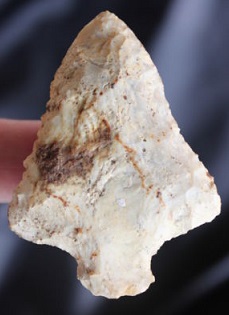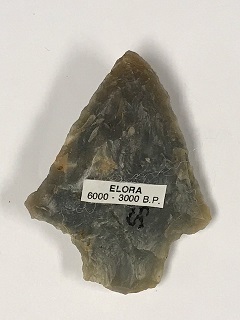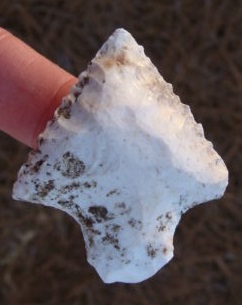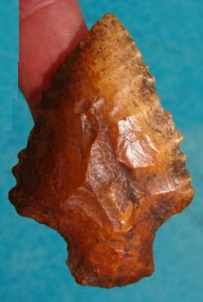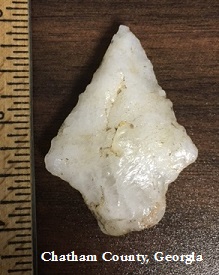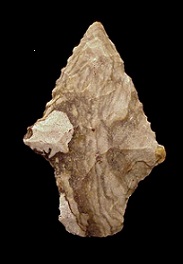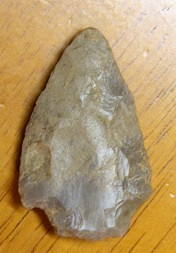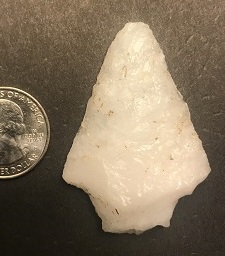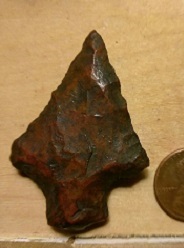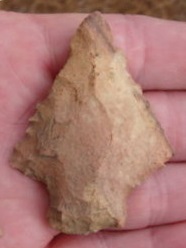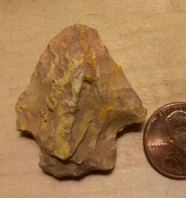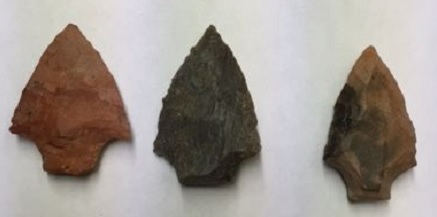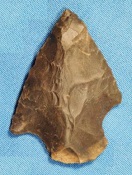Outline is Representative of Size and Shape:
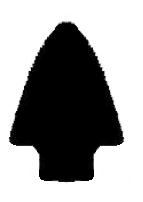
Name Details:
Identified By: James Cambron and David Hulse
Named For: Elora Area of Lincoln County, Tennessee
Date Identified: 1960
Type Site:
Identified By: James Cambron and David Hulse
Named For: Elora Area of Lincoln County, Tennessee
Date Identified: 1960
Type Site:
Point Validity:
Valid type
Cambron is a distinguished avocational archaeologist that did extensive work in Alabama and the Tennessee River valley. Hulse is a renowned avocational archaeologist who did extensive work in Alabama. This point was named in a personally published book. This point has been referred to in numerous professional publications and is considered a valid type.
Cambron is a distinguished avocational archaeologist that did extensive work in Alabama and the Tennessee River valley. Hulse is a renowned avocational archaeologist who did extensive work in Alabama. This point was named in a personally published book. This point has been referred to in numerous professional publications and is considered a valid type.
Elora Stemmed
Cluster: Ledbetter Stemmed Cluster Description of Physical Characteristics and Flaking Pattern:
This is a medium to large (1.75 to 3.75 inches) triangular stemmed point with an thick elliptical cross section. The blade is most commonly straight and may be finely serrated. The blade may be slightly excurvate to slightly incurvate. The shoulders are often slightly asymmetrical with one shoulder sitting slightly higher with a narrower margin from the stem to the blade, and the other shoulder sitting slightly lower with a wider margin from the stem to the blade and one shoulder being slightly sharper thank the other. The shoulders are primarily horizontal, but may be upward angled to slightly barbed. The stem may be straight to slightly contracting. The base is straight to slightly convex, in many examples the stem is unfinished or broken off. This point has a random flaking pattern.
Size Measurements:
Total Length - 39 to 81 mm (average 53 to 63 mm), Stem Length - 5 to 17 mm (average 6 to 12 mm), Blade Width - 31 to 57mm (average 37 to 43 mm), Stem Width - 15 to 22mm (average 16 to 20 mm), Thickness - 7 to 12mm
Total Length - 39 to 81 mm (average 53 to 63 mm), Stem Length - 5 to 17 mm (average 6 to 12 mm), Blade Width - 31 to 57mm (average 37 to 43 mm), Stem Width - 15 to 22mm (average 16 to 20 mm), Thickness - 7 to 12mm
Commonly Utilized Material:
Additional Comments:
Hulse (1975), states that the Elora Serrated point may be a distinct variant of the the Elora point.
The serrated variant of this type is similar to the South Prong Creek type, but may be distinguished by the extent of the serrations. This type generally has serrations the entire length of the blade while the South Prong Creek type only has serrations about two thirds of the blade (Schroder, 2011 W18).
Hulse (1975), states that the Elora Serrated point may be a distinct variant of the the Elora point.
The serrated variant of this type is similar to the South Prong Creek type, but may be distinguished by the extent of the serrations. This type generally has serrations the entire length of the blade while the South Prong Creek type only has serrations about two thirds of the blade (Schroder, 2011 W18).
Distribution: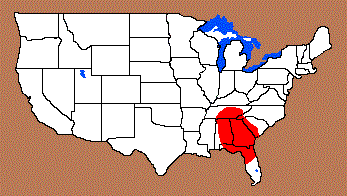
Distribution Comments:
This point is primarily found from the Tennessee River Valley of southern Tennessee into northern Florida and western South Carolina.
This point is primarily found from the Tennessee River Valley of southern Tennessee into northern Florida and western South Carolina.
Age / Periods:
Date: 4,800 - 4,300 B.P.
Cultural Period: Late Archaic
Glacial Period: Middle Holocene to Neoglacial
Culture:
Date: 4,800 - 4,300 B.P.
Cultural Period: Late Archaic
Glacial Period: Middle Holocene to Neoglacial
Culture:
Age Details:
Similar Points:
Abbey, Bradford, Broward, Cotaco Creek, Cottonbridge, Levy, Marion, Morrow Mountain Straight Base, Mulberry Creek, Rheems Creek, Weeden Island
Abbey, Bradford, Broward, Cotaco Creek, Cottonbridge, Levy, Marion, Morrow Mountain Straight Base, Mulberry Creek, Rheems Creek, Weeden Island
Other points in this cluster / Related / Associated Points:
Hale, Ledbetter, Maples, Mulberry Creek, Pickwick, Thonotosassa
Hale, Ledbetter, Maples, Mulberry Creek, Pickwick, Thonotosassa

